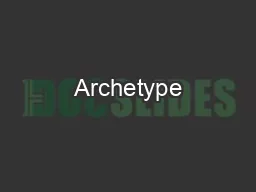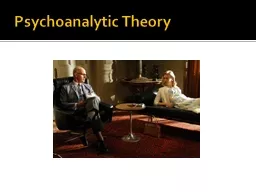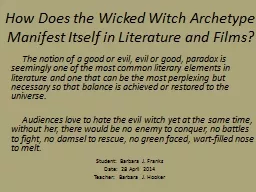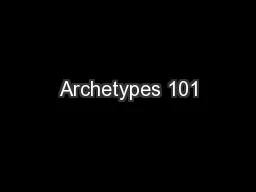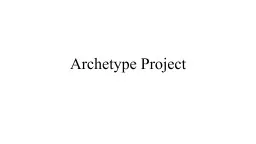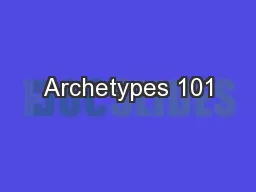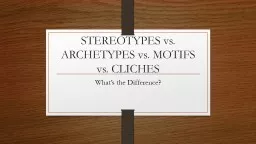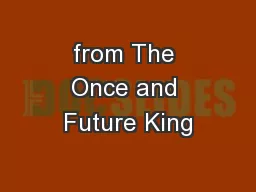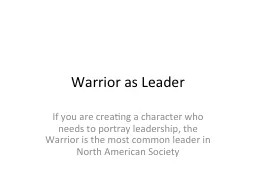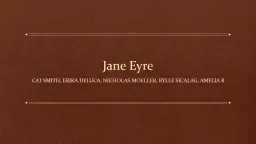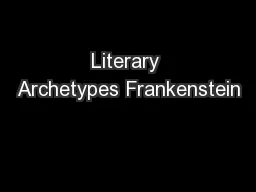PPT-Archetype
Author : liane-varnes | Published Date : 2016-05-14
A very old imaginative pattern that appears in literature across cultures and is repeated throughout the ages Two Famous Psychologists and Their Theories Sigmund
Presentation Embed Code
Download Presentation
Download Presentation The PPT/PDF document "Archetype" is the property of its rightful owner. Permission is granted to download and print the materials on this website for personal, non-commercial use only, and to display it on your personal computer provided you do not modify the materials and that you retain all copyright notices contained in the materials. By downloading content from our website, you accept the terms of this agreement.
Archetype: Transcript
A very old imaginative pattern that appears in literature across cultures and is repeated throughout the ages Two Famous Psychologists and Their Theories Sigmund Freud Personal Unconscious. . CC. Christopher Peknic. "Proprietary Information: Do Not Forward". "Proprietary Information: Do Not Forward". The Archetype of the Dolphin. Mythology . Science . / Biology . Human Interactions (Trans-species). Why study psychology in English Class?. Hint: it’s not because in her subconscious, your teacher wants you to suffer.. Jung offers literary critics a lot to think about as they read the psychological experiences of characters in literature. . The notion of a good or evil, evil or good, paradox is seemingly one of the most common literary elements in literature and one that can be the most perplexing but necessary so that balance is achieved or restored to the universe.. . What is an Archetype?. An . original model . on which something is patterned or based (. prototype. ). In literature: . character, action . or . situation . that represent . universal patterns . in . Expectations. You must choose an accurate . archetype and . provide an explanation of why your character fits. 3 quotes with MLA . citation that prove your character is the chosen archetype. Choose an symbol that represents your character as he/she fits their archetype and explain its relevance . . What is an Archetype?. An . original model . on which something is patterned or based (. prototype. ). In literature: . character, action . or . situation . that represent . universal patterns . in . What’s the Difference?. Definition of STEREOTYPE. A widely held but fixed and oversimplified image or idea of a particular type of person or thing. .. Not literary. We avoid using this term to talk about classifying characters, settings, plot points, etc... October 26. Warm-Up. Grab textbooks and class materials. Place Reading Check Questions in Bucket. Be in seat and ready before the bell. Do Now. The character we are focusing on today is named “the Wart”. What would you expect a character with the name “Wart” to be like? What would they look like?. October 24. WARM-UP. Grab textbooks and class materials. Turn in Reading Questions. Be in your seat Before the Bell. Do Now:. 1. How does Christy Brown demonstrate the characteristics of an outcast? . All you need to know and more!. Creation . The Greek, Christian and Native American myths. Light/Dark – in Greek and Christian . Animals in all three. Plants – in Christian and Native American. Single creator – Christian. The Power of Leadership. We want leaders who discover or create purpose in their own lives and then can articulate this purpose in such a way that we are motivated to follow them in order to find that same purpose for ourselves.. moeller. , . Rylle. . Sicalag. , Amelia B. The Prompt. Discuss the archetypes present in the novel and how they represent the characters, the journey, and the symbolic nature of the novel.. Archetypes represent specific roles, or typical areas of growth and decay in the development of a character, to represent universal patterns of human nature.. What is an Archetype?. An original model which other things are similarly patterned after. An image, story pattern, character type, representation, or recurring idea. Evokes strong associations to the reader or observer. Dr Linda Bird. 26. th. June 2013. Agenda. Background. CIMI . Modelling. Approach. CIMI . Modelling. . Foundations. CIMI . Modelling. Methodology. Future Work. Tomorrow. :. Terminology Binding. background.
Download Document
Here is the link to download the presentation.
"Archetype"The content belongs to its owner. You may download and print it for personal use, without modification, and keep all copyright notices. By downloading, you agree to these terms.
Related Documents

